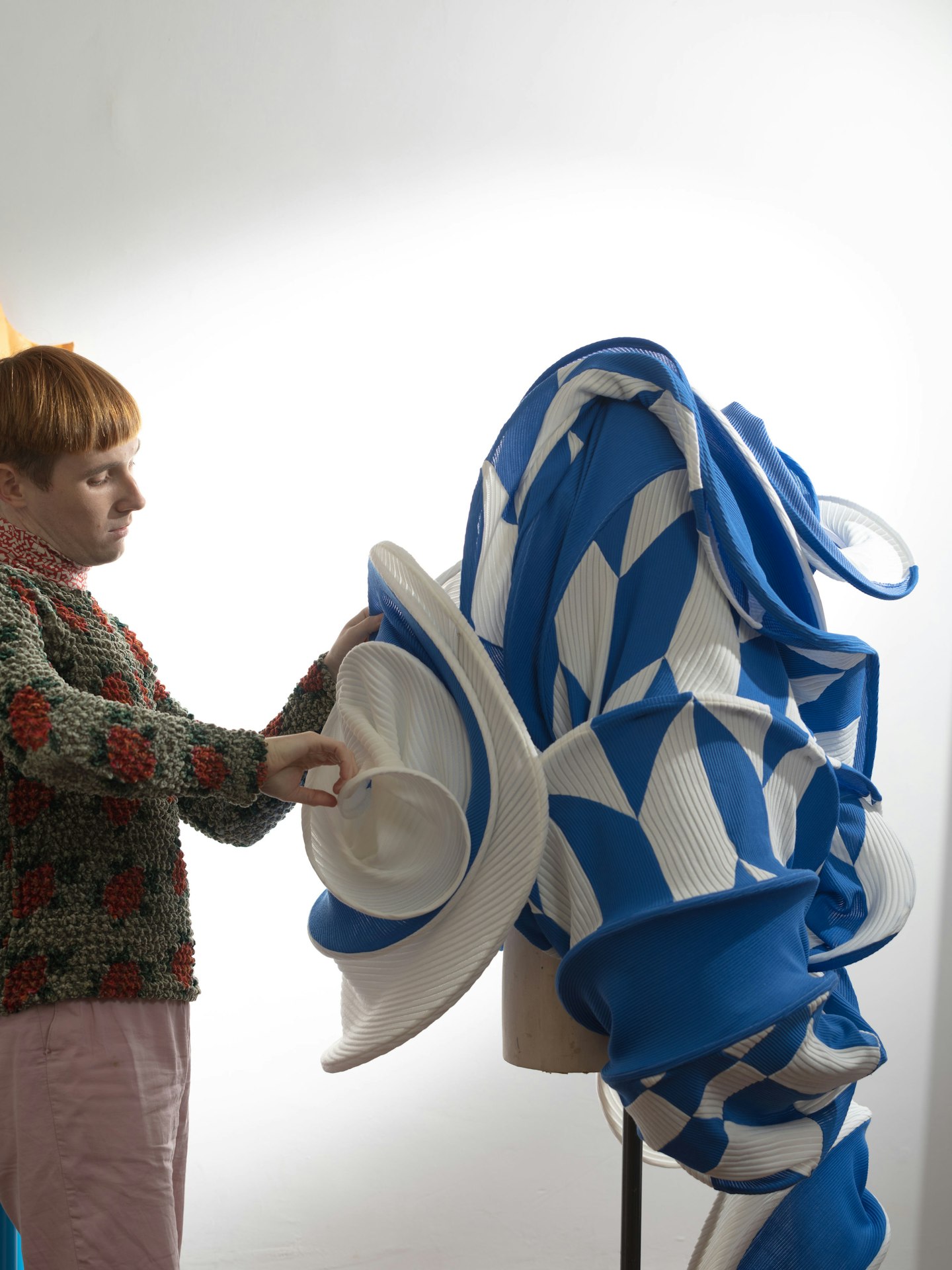Richard Malone is a designer on a mission. Not just to make beautiful clothes (although, yes, he does that – as the women who are fans of his considered, quietly confident clothes will testify), but to democratise the fashion industry, and make it more transparent. The Irish-born, London-based designer is not afraid to stand for something; last year he was a prominent campaigner for the Repeal The 8th campaign.
Malone’s is an important voice in sustainability conversation which is fighting its way to the top of fashion’s agenda right now. Since his London Fashion Week debut last year, the socially conscious designer has been dedicated to using ethically sourced fabrics in his collections. At his September show he used Econyl - a regenerative nylon which can be continually reused – and created bags made in partnership with Freitag crafted from recycled tarpaulin taken from the sides of trucks. In doing this, he never sacrifices the beauty or meticulous execution of the clothes.
Now Malone’s work is the subject of a new exhibition in Greenwich’s NOW Gallery. Rinse Repeat invites the audience into his world and design process – from those ingenious fabric solutions to the conversations with his clients. Ahead of the opening this week, here Richard offers his five tips to shopping more sustainably – which is especially prescient this time of year.

1. Invest only in clothing you love
Consider how the clothes you're buying are impacting the environment - from overproduction of collections, safe working standards, sustainable fabric, and limited production runs. A lot of fashion brands are built on an idea of excess; churning out as much as possible with a high margin, with the remaining unsold stock being incinerated or destroyed. Very few people buy new wardrobes seasonally (and in any case, it goes against any sense of individuality) so just look out for pieces you actually would love to own, and wear for the long term. Hopefully one day sustainability will be inevitable, and those not working within it will be out of the conversation.
2. Ignore the hype
Social media has given rise to fad fashion: badly made sportswear, logo-mania, excessively replicated designer clothing in high streets. Few trends have any shelf life as it breeds the idea of swiping for the next 'thing'. Try to overlook this and invest in pieces that are unique to you, don't try and change your identity to fit in, just be brave and comfortable in yourself. These fads and trends often lead to excessive amount of garments finding their way to landfill once the trend has subsided - we need to avoid this, it's already too late.
3. Support brands that stand for what you stand for
We are all a lot more educated on fashion production now, with documentaries like The True Cost and the Rana plaza disaster genuinely changing our buying habits. We have an enormous spending power and if a brand's ethos or production isn't up to standard, let's stop supporting them. This is the first time in fashion history that businessmen have run the fashion houses. The driving force isn't creativity – it’s the bottom line – and usually at a huge cost to our environment and to the people around the world producing our clothes and our fabrics. Let's let them know that we want inclusive advertising, fair and safe working standards, and sustainable production. Let's let them know that we demand a fashion industry (and a world) where people of all walks of life, gender and nationality and welcome and included in the conversation. When capitalists realise their profits will be down, only then they will respond.

4. Shop second hand/vintage/auction
Shop vintage, get a good tailor. Realistically there are enough clothes in the world, and production in the 70s/80s (especially in Britain) was of an incredible quality - look out for this - old St Michael (M&S) is pretty major for tailoring. As fast fashion has dominated, clothing is made poorly and expected to be discarded after a couple of wears. Don't buy into it. vintage stores, charity shops or auctions are often a lot better value for what you're buying. I've found some amazing pieces in charity shops or auctions, from Balenciaga by Ghesquiere to Azzedine Alaïa body suits to Hermes bags from the 40s, as well as old M&S or Jaeger... it's way cheaper, will last much longer, and no-one else will have it!
5. Be mindful about how you shop in other areas as well
The amount of food waste and packaging going to landfill really needs to be addressed. The real overall problem is excess. Produce more, and the cost to make is cheaper, but the amount of waste is sickening. I've recently found ways to recycle fishing nets into beautiful jerseys (thousands of tonnes of these are discarded in our oceans every year) and plastic bottles/ocean waste into incredible handwoven textiles. But realistically I am just one designer. We need to address this from the ground up - shop at markets, share food, cook at home. An awareness of these problems is just the beginning, and infiltrating these changes is a stepping stone to a more sustainable environment.
RINSE, REPEAT at the NOW Gallery, 28 November ’18 to 27 January ‘19, free entry.
